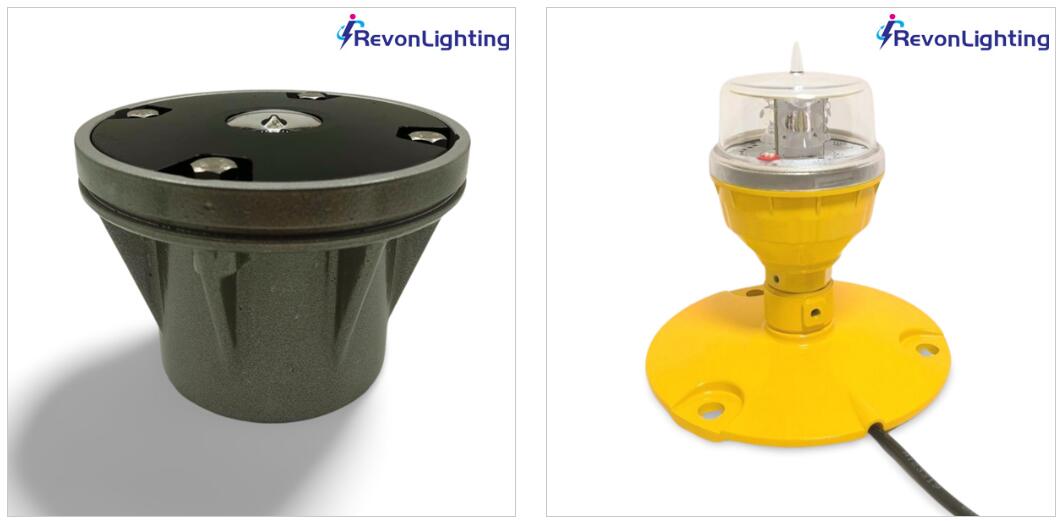Choosing the Right Helipad Lighting Suppliers for Optimal Aviation Safety
Helipad lighting is a critical component of aviation infrastructure, ensuring safe landings and takeoffs, especially during nighttime or adverse weather conditions. Selecting reliable helipad lighting suppliers is essential for compliance with regulatory standards, durability, and performance. This article explores key factors to consider when choosing suppliers, the types of lighting systems available, and best practices for installation and maintenance. Revon Lighting is one of the top helipad supplier in China.
1. Key Considerations When Selecting Helipad Lighting Suppliers
A. Compliance with Aviation Regulations
Reputable helipad lighting suppliers must provide products that meet FAA (Federal Aviation Administration), ICAO (International Civil Aviation Organization), and other regional aviation authority standards. Key certifications to look for include:
FAA AC 150/5390-2C: Guidelines for heliport design.
ICAO Annex 14: International standards for aerodrome lighting.
Military Specifications (MIL-SPEC): For defense and emergency service helipads.

B. Product Quality and Durability
Helipad lighting systems must withstand harsh environmental conditions, including:
Extreme temperatures (from freezing cold to desert heat).
| helipad lighting suppliers |
Water and corrosion resistance (especially for offshore helipads).
UV and chemical resistance to prevent degradation over time.
C. Customization and Scalability
Different helipads have unique requirements based on location, usage frequency, and operational needs. Leading helipad lighting suppliers should offer:
Modular designs for easy expansion.
Customizable light intensity (adjustable for urban vs. rural environments).
Solar-powered options for remote or off-grid installations.
D. Technical Support and After-Sales Service
Reliable suppliers should provide:
Installation guidance and technical documentation.
Warranty and repair services.
24/7 customer support for emergency replacements.
2. Types of Helipad Lighting Systems Offered by Suppliers
A. Perimeter Lighting
Omnidirectional LED lights (white or green) for boundary marking.
Flush-mounted fixtures to avoid FOD (Foreign Object Damage).
High-intensity strobes for enhanced visibility in fog or rain.
B. Touchdown and Position Lights (TDLs)
Yellow or white LED markers to define the landing zone.
Elevated or recessed options depending on helipad type.
C. Approach Lighting Systems
Sequenced flashing lights for IFR (Instrument Flight Rules) approaches.
Elevated runway alignment lights for precision landings.
D. Solar-Powered Helipad Lighting
Battery-backed systems for uninterrupted operation.
Self-sustaining units ideal for remote locations.
3. Leading Helipad Lighting Suppliers in the Market
A. Established Aviation Lighting Manufacturers
Some of the most trusted helipad lighting suppliers include:
Honeywell Aerospace (known for high-performance aviation lighting).
Eaton Aerospace (specializes in rugged, military-grade solutions).
ADB Safegate (provides advanced LED helipad lighting systems).
Revon Lighting
B. Specialized Helipad Lighting Providers
Several companies focus exclusively on helipad lighting, offering:
Custom-engineered solutions for hospitals, offshore platforms, and urban rooftops.
Rapid deployment systems for emergency and disaster response helipads.
C. Emerging Innovators in LED Technology
Newer helipad lighting suppliers are leveraging advancements in:
Energy-efficient LEDs with longer lifespans.
Smart lighting controls (remote dimming, automatic brightness adjustment).
4. Best Practices for Procuring Helipad Lighting Systems
A. Conducting a Needs Assessment
Before selecting a supplier, evaluate:
Helipad type (ground-level, rooftop, offshore).
Traffic volume (frequent medical flights vs. occasional use).
Environmental challenges (high winds, saltwater exposure, extreme temperatures).
B. Requesting Product Demonstrations
Reputable suppliers should provide:
On-site testing to verify light intensity and coverage.
Case studies of previous installations.
C. Evaluating Long-Term Costs (Beyond Initial Purchase)
While avoiding price discussions, consider:
Maintenance requirements (how often bulbs or batteries need replacement).
Energy consumption (solar vs. wired systems).
Warranty coverage (length and terms).
5. Installation and Maintenance Tips
A. Proper Installation Techniques
Follow FAA/ICAO spacing guidelines for perimeter and touchdown lights.
Ensure waterproof connections for outdoor and offshore helipads.
Use anti-glare fixtures to prevent pilot disorientation.
B. Routine Maintenance Protocols
Monthly inspections for damaged or dimming lights.
Cleaning lenses to maintain optimal brightness.
Testing backup power systems regularly.
Choosing the right helipad lighting suppliers is crucial for ensuring aviation safety, regulatory compliance, and long-term reliability. By prioritizing quality, durability, and supplier support, helipad operators can enhance visibility for pilots and reduce operational risks. Whether for hospital rooftops, offshore platforms, or emergency landing zones, investing in high-performance lighting systems is a non-negotiable aspect of modern aviation infrastructure.
By carefully evaluating suppliers and adhering to best practices in installation and maintenance, organizations can ensure their helipads remain safe and operational under all conditions.
